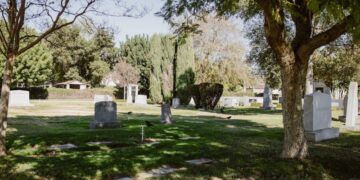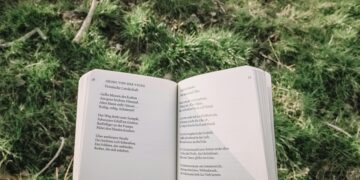Table of Contents
I was once asked to do the impossible: compile the definitive list of the best American books of the 20th century.
It sounds like a dream assignment for a literary critic, a chance to plant a flag and declare, “Here lies greatness.” In reality, it was a descent into a special kind of madness.
I started where anyone would, by gathering the data.
I pulled the popular choices from Goodreads, the prize-winners from the Pulitzer and National Book Award committees, and the more academic selections from scholarly institutes.
What I ended up with wasn’t a coherent picture, but a chaotic, contradictory mess.
It was a professional crisis.
The project felt doomed.
How could I reconcile these warring canons into a single, authoritative ranking? My failure wasn’t in the execution, but in the premise.
I was trying to draw a straight line through a sprawling, wild landscape.
Then, in a moment of desperation, I stumbled upon an idea from a field that seemed a world away: urban planning.
It was the concept of “desire paths,” and it didn’t just give me an answer—it gave me a whole new way to see.
The Tyranny of the List
My initial approach was simple: aggregate and synthesize.
But the sources refused to speak the same language.
On one hand, there were the people’s choices, lists from sites like Goodreads dominated by beloved, widely-taught classics.
To Kill a Mockingbird, The Great Gatsby, The Catcher in the Rye, and the works of John Steinbeck consistently topped these charts, reflecting a canon built on accessibility and enduring popular appeal.1
This was the canon of the public consciousness.
Then there was the institutional canon.
The Pulitzer Prize for Fiction, awarded annually since 1918 (with some gaps), offered a year-by-year chronicle of what the establishment deemed meritorious.
It gave us The Grapes of Wrath by John Steinbeck, To Kill a Mockingbird by Harper Lee, and Beloved by Toni Morrison.3
The National Book Awards, which began in 1950, presented another “official” history, honoring works like Ralph Ellison’s
Invisible Man, William Faulkner’s A Fable, and Thomas Pynchon’s Gravity’s Rainbow.5
These lists felt more formal, a record of peer-reviewed consensus.
But even these official bodies weren’t monolithic.
And then, a third set of lists emerged, representing a more ideological perspective.
The Intercollegiate Studies Institute, for example, published a list of the 50 “best” books that looked almost nothing like the others.
It was heavy on non-fiction, political philosophy, and conservative thought, championing works like Henry Adams’s The Education of Henry Adams, Whittaker Chambers’s Witness, and Russell Kirk’s The Conservative Mind.8
Staring at these documents, I felt adrift.
Who was right? The millions of readers on Goodreads? The Pulitzer committee? The conservative academics? Each list was a map, but they weren’t just different maps of the same country; they were maps of entirely different worlds, drawn with different instruments to measure entirely different things.
Was “best” a measure of popularity, literary innovation, or moral weight? The very act of creating a single, ranked list—a linear hierarchy—seemed fundamentally at odds with the sprawling, subjective, multi-dimensional nature of Art. Literature isn’t a racetrack with a single finish line.
It’s a landscape.
I abandoned the project, my office littered with contradictory data, feeling like a complete failure.
An Epiphany in Urban Planning
The breakthrough came, as it often does, from a place I wasn’t looking.
I was reading about urban planning and came across the concept of “desire paths.” These are the unofficial trails worn into the ground by the repeated foot traffic of people and animals.9
They are the shortcuts across a grassy quad, the dirt tracks that cut a corner where a paved sidewalk takes a needlessly long route.
As one writer beautifully put it, they are “free-will ways” that run “contrary to design or planning”.11
These paths emerge from a collective, intuitive sense that the planned route is inefficient or insufficient.
It can take as few as 15 passages to create a visible trail, a mark on the landscape that communicates a better way to others.11
Planners have two choices when faced with a desire path: they can block it with a fence or shrubbery, fighting against human nature.
Or, they can do something much wiser: they can accommodate it.
They can pave it over, officially integrating the user-created solution into the formal network.
In Finland, some planners famously wait until after the first snowfall, when they can see the footprints marking the most naturally chosen routes, and then build their sidewalks there.10
The analogy struck me with the force of a revelation.
The “paved sidewalks” of literature are the official canons—the prize lists, the syllabi, the established genres.
They are the routes the establishment tells us to take.
The “desire paths” are the literary movements that erupted organically from a collective cultural need, often in defiance of the established forms.
A new literary movement isn’t just an aesthetic choice; it’s a path being worn into the ground because the existing sidewalks no longer lead where people need to go.
This reframed everything.
My job as a critic wasn’t to be a judge, creating one more flawed list.
It was to be a landscape architect, or perhaps a cultural ecologist, studying the terrain to understand why these paths emerged, where they led, and what they told us about the people who walked them.
Mapping the Landscape: The Great Desire Paths of 20th-Century American Literature
Armed with this new framework, I returned to my messy pile of books and lists.
What was once a contradictory mess now looked like a beautiful, intricate map of a living landscape, crisscrossed with official highways and organic trails.
To navigate this landscape, it helps to have a legend.
The following table charts the major desire paths that defined the century, connecting the movements to the cultural needs that created them.
| The Desire Path (Movement) | The Core “Desire” (Cultural Impulse) | Key Path-Carvers (Authors) | Landmark on the Trail (Representative Work) |
| Modernism / Lost Generation | To make sense of a fragmented, post-war world. | William Faulkner, Ernest Hemingway, F. Scott Fitzgerald | The Sound and the Fury, The Sun Also Rises |
| The Harlem Renaissance | To forge a distinct Black artistic and cultural identity. | Zora Neale Hurston, Langston Hughes, Nella Larsen | Their Eyes Were Watching God, Passing |
| Hard-Boiled Detective Fiction | To reflect a more cynical, morally ambiguous America. | Dashiell Hammett, Raymond Chandler | The Maltese Falcon, The Big Sleep |
| “Golden Age” Science Fiction | To grapple with the promises and perils of technology & the Cold War. | Isaac Asimov, Ray Bradbury, Philip K. Dick | Foundation, Fahrenheit 451 |
| “New Wave” / Social Sci-Fi | To use speculative worlds to critique social structures (gender, politics). | Ursula K. Le Guin, Kurt Vonnegut | The Left Hand of Darkness, Slaughterhouse-Five |
| Postmodernism | To challenge the idea of a single, authoritative truth or narrative. | Thomas Pynchon, Toni Morrison, Don DeLillo | Gravity’s Rainbow, Beloved |
The Paved Sidewalks: The Official Canon
Before exploring the wilder trails, we must acknowledge the paved sidewalks.
The Pulitzer and National Book Award winners represent the established routes, the works deemed significant by the literary establishment of their time.3
They are essential landmarks—Faulkner, Hemingway, Steinbeck, Morrison—and often represent the official “paving over” of a desire path long after it was first trod.
But these official roads, while important, don’t tell the whole story of how the landscape was truly explored and settled.
The Path of Disillusionment: Modernism’s Break with the Past
The first great desire path of the 20th century was worn by the feet of the “Lost Generation”.12
The paved sidewalks of 19th-century realism and romanticism were utterly inadequate for navigating the terrain of a world shattered by World War I, rapid industrialization, and Freudian psychology.
A new language was needed to express this new reality of fragmentation and disillusionment.14
Writers like Ernest Hemingway, F.
Scott Fitzgerald, William Faulkner, and T.S.
Eliot became the first path-carvers.16
Hemingway’s terse, declarative prose and his “iceberg theory”—where most of the meaning lies beneath the surface—was a direct rejection of ornate Victorian style.14
Faulkner’s use of stream-of-consciousness and non-linear timelines in novels like
The Sound and the Fury was not an attempt to be difficult; it was an honest attempt to map the chaotic, associative landscape of human memory and trauma.14
These stylistic innovations were not mere experiments.
They were the necessary tools for survival in a new and treacherous world.
The Path of Self-Invention: The Harlem Renaissance’s New Voice
Simultaneously, another crucial desire path was being forged in uptown Manhattan.
The Harlem Renaissance was born of a desire to articulate a modern, vibrant, and complex Black identity, free from the racist caricatures of the past and the narrow political expectations of the present.17
Writers like Langston Hughes, Claude McKay, and Nella Larsen sought to create a new literature that celebrated the language, music (especially blues and jazz), and folklore of Black American life.17
No story better illustrates this desire path than that of Zora Neale Hurston’s Their Eyes Were Watching God.
When it was published in 1937, it was a radical departure.
It focused on the interior life and romantic journey of a Black woman, Janie Crawford, rendered in a rich, poetic Southern dialect.19
The “planners” of the Black literary establishment, including influential figures like Richard Wright and Alain Locke, largely dismissed it.
They criticized it for not focusing on racial protest against white supremacy, accusing Hurston of creating “minstrels” for the amusement of white readers.21
They saw her path as a frivolous detour from the main road of racial uplift.
But the path remained.
Readers continued to find it.
Decades later, the novelist Alice Walker famously “rediscovered” Hurston’s work, leading to its canonization as a foundational text of both the Harlem Renaissance and American feminism.19
The story of this novel’s reception is the desire path analogy in miniature.
Hurston carved a trail to a destination—Black female self-actualization—that the official mapmakers of her time didn’t recognize as valid.
Its persistence and eventual “paving” prove that the importance of a path is not determined by its initial official sanction, but by the essential human need it serves.
The Gritty Alleyways: The Hard-Boiled Path
While Modernists were forging new paths in high literature, another trail was being cut through the dark alleys of genre fiction.
The “paved sidewalks” of the mystery genre in the early 20th century were the “Golden Age” puzzle-box stories, largely imported from Britain.22
These were intellectual exercises, often set in quaint country manors.
The desire path of hard-boiled detective fiction was a direct, cynical response.
Writers like Dashiell Hammett and Raymond Chandler wanted to create a crime fiction that reflected the corruption, violence, and moral ambiguity of urban America, particularly during the Depression.24
Hammett, drawing on his own experiences as a Pinkerton detective, pioneered the style with novels like
The Maltese Falcon and Red Harvest.25
His “no-nonsense” protagonists and authentic, gritty prose created a new, distinctly American trail.25
This wasn’t just a stylistic choice; it was a moral one.
It rejected the clean, comforting resolution of the parlor-room mystery for a world where justice was messy, compromised, and often unattainable.
The Paths to Other Worlds: Science Fiction’s Exploration of Our Own
Science fiction carved multiple desire paths throughout the century, all leading away from the mundane world in order to better understand it.
The first major highway was built by the “Big Three”—Isaac Asimov, Robert A.
Heinlein, and Arthur C.
Clarke.26
They created grand “future histories” and tales of technological progress that grappled with the anxieties of the Atomic Age and the Cold War.
Alongside them, authors like Ray Bradbury (
Fahrenheit 451) and Philip K.
Dick explored themes of social control, paranoia, and what it means to be human.1
But perhaps the most transformative path in the genre was carved by Ursula K.
Le Guin.
She fundamentally altered the landscape by integrating the “soft sciences” of anthropology, sociology, and psychology into her work.29
Before Le Guin, science fiction was largely the domain of physics and engineering.
She demonstrated that the genre could be a powerful tool for exploring complex social structures, gender identity, politics, and philosophy.
In novels like
The Left Hand of Darkness, she used alien worlds as laboratories to deconstruct our own assumptions about society.
Le Guin didn’t just create a new path; she widened the entire purpose of the genre, creating space for the feminist, diverse, and socially critical science fiction that flourishes today.29
The Path That Questions All Paths: The Labyrinth of Postmodernism
By the second half of the century, the landscape had become crowded with paths.
The cultural desire shifted again, this time to question the map itself.
Postmodernism was born from a desire to challenge the very idea of a single, authoritative narrative in a world saturated with media, advertising, and competing truths.30
Writers like Thomas Pynchon, Kurt Vonnegut, Don DeLillo, and John Barth became the new path-carvers, but their trails were often labyrinths or Möbius strips.31
They employed techniques like metafiction (drawing attention to the artificiality of the book), fragmentation, and playful intertextuality to create works that were self-aware and deeply skeptical of grand truths.31
Vonnegut’s
Slaughterhouse-Five makes the reader “unstuck in time” along with its protagonist, Billy Pilgrim, to show the senseless, non-linear nature of trauma.31
Pynchon’s
Gravity’s Rainbow is a famously complex network of paranoia and conspiracy, a path that seems to lead everywhere and nowhere at once.32
Toni Morrison’s Pulitzer-winning
Beloved can be seen as a postmodern path that circles back into history, using fragmented memories and haunting to reclaim a story of slavery that the “official” historical sidewalks had tried to pave over and forget.3
Postmodernism is the ultimate expression of the desire path philosophy.
It is a literature that is about the act of path-making, acknowledging that all routes are constructed and inviting us to play in the ruins of certainty.
Your Compass for the Wilderness
My journey began with the frustrating search for a definitive list and ended with the liberating discovery of a living map.
The “desire path” framework doesn’t give us a new hierarchy of “best” books.
It gives us something far more valuable: a new way of seeing.
It gives us a compass.
It encourages us to ask better questions.
When we encounter a book or a movement, we can ask: Why was this path necessary? What established road was it turning away from? What collective desire, what cultural hunger, wore this trail into the ground?
The great works of 20th-century American literature are not items on a checklist.
They are destinations, landmarks, and wild trails in a vast and fascinating territory.
The goal is not to visit every single one, but to understand the landscape.
And then, with compass in hand, you can chart your own course, following the paths that speak to your own needs, your own questions, your own desires.
The wilderness is waiting.
Works cited
- Best Twentieth Century American Novels (299 books) – Goodreads, accessed August 14, 2025, https://www.goodreads.com/list/show/4643.Best_Twentieth_Century_American_Novels
- Greatest American Novels of the 20th Century (122 books) – Goodreads, accessed August 14, 2025, https://www.goodreads.com/list/show/23979.Greatest_American_Novels_of_the_20th_Century
- Pulitzer Prize Winners | Wisconsin Department of Public Instruction, accessed August 14, 2025, https://dpi.wi.gov/talkingbooks/services/reading-lists/pulitzer-winners
- pulitzer100fictionbookmark.pdf – The Pulitzer Prizes, accessed August 14, 2025, https://www.pulitzer.org/cms/sites/default/files/content/2016/pulitzer100fictionbookmark.pdf
- List of winners of the National Book Award – Wikipedia, accessed August 14, 2025, https://en.wikipedia.org/wiki/List_of_winners_of_the_National_Book_Award
- The National Book Award archives: fiction winners since 1950 – AbeBooks, accessed August 14, 2025, https://www.abebooks.com/books/american-literature-nba-foundation/national-book-awards.shtml
- National Book Award for Fiction – Wikipedia, accessed August 14, 2025, https://en.wikipedia.org/wiki/National_Book_Award_for_Fiction
- The 50 Best Books of the 20th Century – Intercollegiate Studies Institute, accessed August 14, 2025, https://isi.org/the-50-best-books-of-the-20th-century/
- classifying desire paths utilizing a campus master plan study: a method for recognizing urban design flaws – MavMatrix, accessed August 14, 2025, https://mavmatrix.uta.edu/landscapearch_theses/286/
- Desire path – Wikipedia, accessed August 14, 2025, https://en.wikipedia.org/wiki/Desire_path
- What are Desire Paths? – Geography Realm, accessed August 14, 2025, https://www.geographyrealm.com/what-are-desire-paths/
- List of writers of the Lost Generation – Wikipedia, accessed August 14, 2025, https://en.wikipedia.org/wiki/List_of_writers_of_the_Lost_Generation
- Lost Generation | Definition, Writers, Characteristics, Books, & Facts | Britannica, accessed August 14, 2025, https://www.britannica.com/topic/Lost-Generation
- Key Modernist Authors to Know for Art and Literature, The Modern Period – Fiveable, accessed August 14, 2025, https://library.fiveable.me/lists/key-modernist-authors
- Modernism in Literature: Definition, Characteristics, Examples, and More, accessed August 14, 2025, https://essaypro.com/blog/modernism-in-literature
- List of modernist writers – Wikipedia, accessed August 14, 2025, https://en.wikipedia.org/wiki/List_of_modernist_writers
- Harlem Renaissance | Definition, Artists, Writers, Poems, Literature, & Facts | Britannica, accessed August 14, 2025, https://www.britannica.com/event/Harlem-Renaissance-American-literature-and-art
- The essential Harlem Renaissance reads – Penguin Books, accessed August 14, 2025, https://www.penguin.co.uk/discover/articles/essential-harlem-renaissance-reads
- Their Eyes Were Watching God – Wikipedia, accessed August 14, 2025, https://en.wikipedia.org/wiki/Their_Eyes_Were_Watching_God
- Their Eyes Were Watching God | National Endowment for the Arts, accessed August 14, 2025, https://www.arts.gov/initiatives/nea-big-read/their-eyes-were-watching-god
- Still Searching for Zora Neale Hurston – Michigan Law Review, accessed August 14, 2025, https://michiganlawreview.org/journal/still-searching-for-zora-neale-hurston/
- Golden Age of Detective Fiction – Wikipedia, accessed August 14, 2025, https://en.wikipedia.org/wiki/Golden_Age_of_Detective_Fiction
- Golden Age of Mystery and Detective Fiction | EBSCO Research Starters, accessed August 14, 2025, https://www.ebsco.com/research-starters/literature-and-writing/golden-age-mystery-and-detective-fiction
- Golden Age Mystery: 30 Titles by Notable American Crime Writers – The Passing Tramp, accessed August 14, 2025, http://thepassingtramp.blogspot.com/2015/04/american-golden-age-mystery-25-classic.html
- The Dashiell Hammett Family Papers – University Libraries …, accessed August 14, 2025, https://sc.edu/about/offices_and_divisions/university_libraries/browse/irvin_dept_special_collections/collections/dashiell_hammett_family_papers.php
- The “Big Three” of 20th Century Science Fiction. – Raptis Rare Books, accessed August 14, 2025, https://www.raptisrarebooks.com/the-big-three-of-20th-century-science-fiction/
- www.hilobrow.com, accessed August 14, 2025, https://www.hilobrow.com/golden-age-sci-fi/#:~:text=Dick%20%7C%20Jack%20Williamson%20%7C%20George%20Orwell,L’Engle%20%7C%20Arthur%20C.
- GOLDEN AGE SCI-FI: 1934–1963 – HiLobrow, accessed August 14, 2025, https://www.hilobrow.com/golden-age-sci-fi/
- The Influence of Ursula K. Le Guin – PDXScholar – Portland State …, accessed August 14, 2025, https://pdxscholar.library.pdx.edu/cgi/viewcontent.cgi?article=1062&context=eng_bookpubpaper
- Postmodern literature – Wikipedia, accessed August 14, 2025, https://en.wikipedia.org/wiki/Postmodern_literature
- Postmodern Literature Guide: 10 Notable Postmodern Authors …, accessed August 14, 2025, https://www.masterclass.com/articles/postmodern-literature-guide
- The Ultimate Guide to Postmodern American Lit – Number Analytics, accessed August 14, 2025, https://www.numberanalytics.com/blog/ultimate-guide-to-postmodern-american-lit






